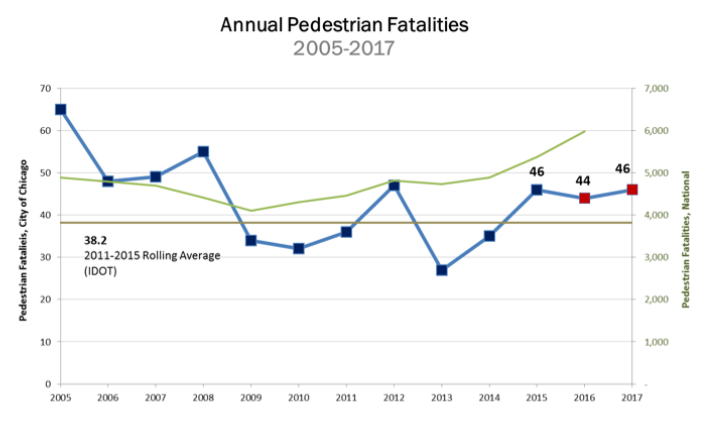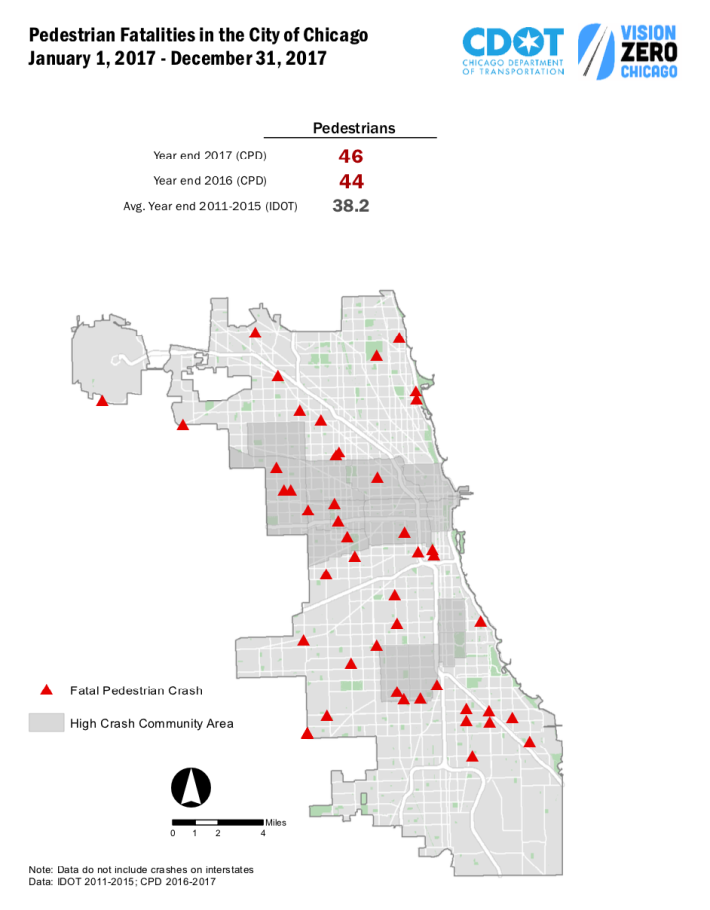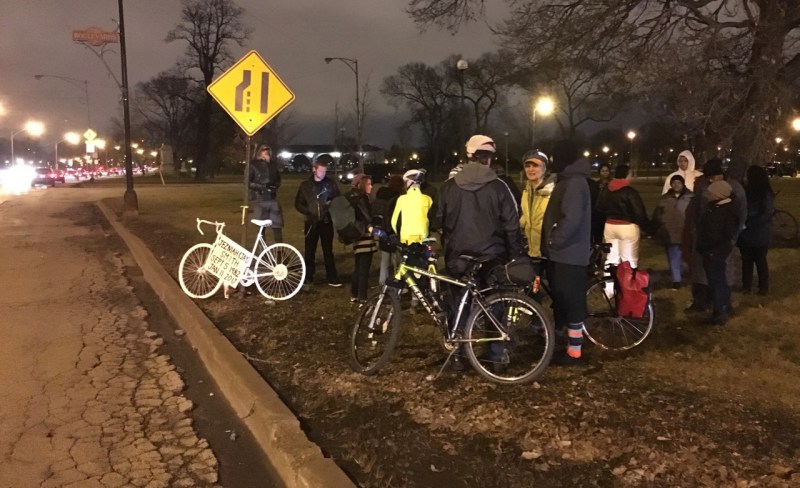At today's Mayor's Pedestrian Advisory Council meeting, Chicago Department of Transportation commissioner Rebekah Scheinfeld announced Chicago on-street traffic death numbers for 2017, based on preliminary crash data from the police department. Total traffic deaths rose significantly last year, up from 119 in 2016 to 132 in 2017. This is in line with a national rise in traffic fatalities, blamed on more driving due to cheap gasoline and the improving economy, an increase in cell phone use by drivers, and other factors.
In particular, the number of people in cars who died in Chicago crashes spiked dramatically, from 63 in 2016 to 80 in 2017 -- a 27 percent increase. This was well above the average number of Chicago motorist fatalities from 2011 to 2015 of 65.8 deaths, based on official crash data from the Illinois Department of Transportation.

The number of Chicago pedestrian fatalities also rose last year, from 44 in 2016 to 46 in 2017. This was also higher than the five-year average for Chicago pedestrian fatalities of 38.2 deaths, based on IDOT numbers. Scheinfeld noted that while local pedestrian fatalities have been on the rise since 2013, the increase is below the rate of the most recent nationwide stats, which showed an 11 percent increase in pedestrian deaths between 2015 and 2016. The dense, relatively affluent North Side of Chicago saw a lower concentration of pedestrian deaths than other areas of the city. 40 percent of the pedestrian deaths involved a hit-and-run driver, which is on par with previous years.

There were seven on-street Chicago bike fatalities last year. (An eighth cyclist was fatally struck by an 'L' train in June after he rode on the Sox-35th station platform and fell onto the tracks.) However, CDOT is not counting a case in which a cyclist was while struck crossing Metra tracks in December in its crash numbers because the collision didn't involve a motorist. Therefore the city's count of six cyclist deaths in 2017 is the same number as in 2016. This is in keeping with the five-year average of 6.2 bike fatalities.

These increasing fatality numbers are discouraging in light of the city's Vision Zero goal to eliminate all traffic deaths by 2026. However, the official Vision Zero plan was only released eight months ago, so it may be premature to judge whether the strategies in the plan are having an effect. 30 percent of the 2017 pedestrian fatalities, and 45 percent of all fatal crashes, took place in locations designated in the plan as high crash corridors or high crash locations.
Hopefully the initiatives that the city is currently implementing, such as safety education outreach via the Vision Zero street team, and building new infrastructure to make pedestrian crossings safer, will bear fruit next year with lower fatality numbers.
There were two pedestrian fatalities in Chicago in January 2018, compared to six in January 2017. "Let's hope this trend continues, but we can't just be hopeful," Scheinfeld said. "That's why we're here."
This post is made possible by a grant from the Illinois Bicycle Lawyers at Keating Law Offices, P.C., a Chicago, Illinois law firm committed to representing pedestrians and cyclists. The content is Streetsblog Chicago's own, and Keating Law Offices neither endorses the content nor exercises any editorial control.





